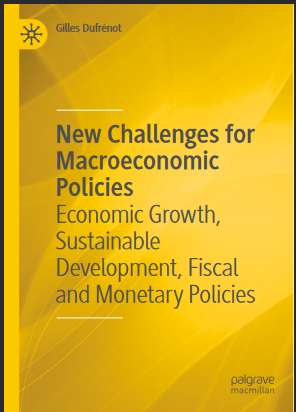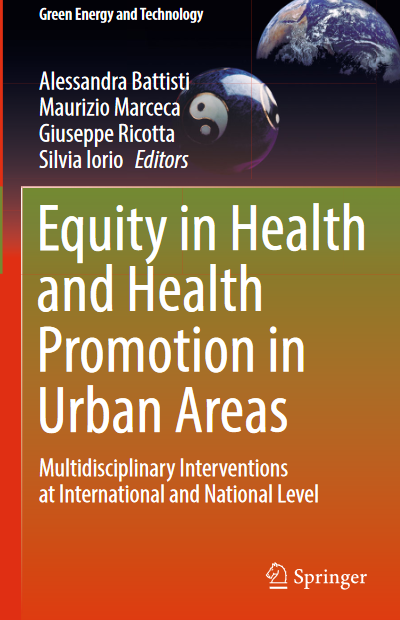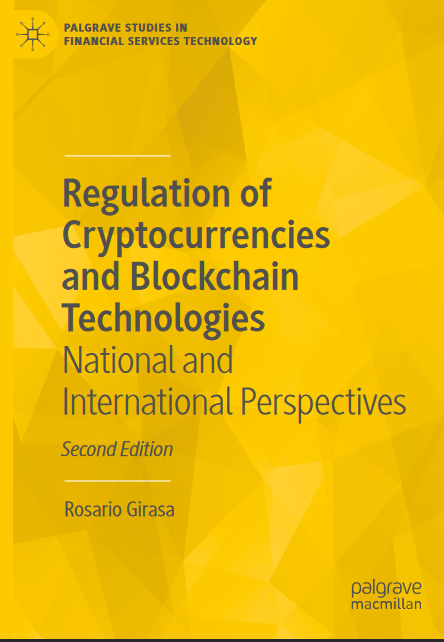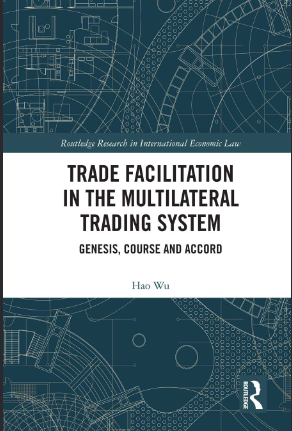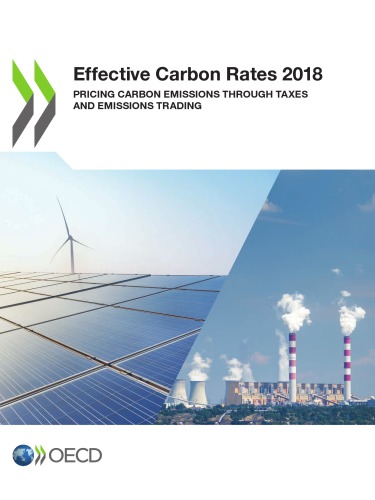موضوعات
آموزش و پرورش
ادبیات و زبان
پزشکی، دندانپزشکی و داروسازی
تاریخ و جغرافیا
داستان و رمان
دیگر
دین و فلسفه
روانشناسی
ریاضیات و آمار
سلامتی، تناسب اندام و رژیم غذایی
شیمی و پلیمر
علوم اجتماعی و حقوق
علوم زیستی و بیوتکنولوژی
فیزیک و نجوم
کامپیوتر و اینترنت
کتابهای کودکان و داستان
کسب و کار و اقتصاد
کشاورزی و دامپزشکی و غذا
معماری
مهندسی و فناوری
هنر و تئاتر
محصولات
Agricultural Innovation in Asia Efficiency, Welfare, and Technology - Original PDF
نویسندگان: خلاصه: The term innovation has attracted the attention of many scholars. Some of them mentioned this directly. One of the most well-known pioneers was Schumpeter, who influenced the theory of innovation (OECD, 2005). Innovation is defined as the “Innovation or development combines factors in a new way or it consists in carrying out new combinations” (Schumpeter, 1939, 1983). Thus, innovation is considered to be a component of economic growth. Schumpeter (1983) divided innovation into five types: new products (a new good that consumers are not yet familiar with or a new quality of a good), new methods of production that are not yet tested adequately by the manufacturer, new sources of supply of raw materials or half-manufactured goods, irrespective of whether this source already exists or whether it has first to be created, opening of new markets (that is, a market into which the particular branch of manufacture of the country in question has not previously entered, whether or not this market has existed before), and newly introducing or reorganizing any industry. Rogers (1983) stated that “an innovation is an idea, practice, or object perceived as new by an individual or other unit of adoption” when he developed the theory of diffusion. The diffusion approach allows one to assess the impact of development programs on many aspects such as agriculture (Rogers, 1983)The Endogenous Energy-Saving Technological Change in China’s Industrial Sector - Original PDF
نویسندگان: خلاصه: Preface Decarbonization of the Chinese economy largely depends on the degree of decar- bonization of industry. Since improving energy efficiency and increasing energy R&D investment are arguably the chief drivers of the sustainable growth of the Chinese industry, this book attempts to study energy efficiency and energy R&D investment under one normalized economic model. By distinguishing between energy R&D investment and non-energy R&D investment and drawing on the paradigm of neoclassical economics, I start by clarifying the basic concept of energy- saving technological change (hereinafter referred to as “ESTC”) and the related endogenous mechanism, proceed to integrate under the existing endogenous growth model two different mechanisms whereby R&D heterogeneity affects energy effi- ciency, namely the effect of factor substitution and the effect of increased effective energy input, and finally build a framework of analysis and a mathematical model of R&D heterogeneity-based endogenous ESTC in industry. I analyze the model with the tools of competitive equilibrium, centrally planned equilibrium, and numerical simulation and empirically test the major assumptions of the model with industrial statistics and econometric analytical tools, namely the mixed data regression model, the panel data regression model, and the dynamic panel data regression model. This book focuses on how R&D heterogeneity influences endogenous ESTC in China’s industrial sectors and endeavors to answer the following questions: How does R&D heterogeneity bring about endogenous ESTC? How are the rates of ESTC in the industrial sectors estimated? What is the impact of R&D heterogeneity on the rates of ESTC in the industrial sectors? This book sets itself apart from other existing research by the following work and potentially innovative pointsFinancial Innovations and Monetary Reform - Original PDF
نویسندگان: خلاصه: Many economics textbooks have explained the slow transformation from a sub- sistence economy to a barter economy, thus limited by the comparability of the objects or services exchanged. Although an improvement over the subsistence economy, the barter economy remains cumbersome and inefficient, as it requires the simultaneous acceptance of a transaction by both parties with physical delivery. The barter economy eventually gave way to a financial economy that was made possible by the issuance of money, a potentially universal intermediate means of payment, conducive to labor specialization and economic development.1 The Greek civilization and the emerging monetary system that resulted from it led international trade for centuries (from the fifth to the first century BC). Dur- ing this period of antiquity, the countries surrounding the Mediterranean became a world of commercial and industrial competition with the Greeks, the Phoenicians in the west and the Medes on the southeastern border as the playersNew Challenges for Macroeconomic Policies Economic Growth, Sustainable Development, Fiscal and Monetary Policies - Original PDF
نویسندگان: خلاصه: P REFACE Macroeconomists’ efforts to investigate a series of new phenomena have been considerable over the past decade. Theories and methods hitherto considered to be the backbone of reasoning are gradually being called into question, because they do not provide answers to new puzzles. Why don’t current Phillips curves take into account financial inflation, that is, changes in the financial asset prices? Why should a central bank worry about controlling the real sector inflation when it is low? How should governments behave to reduce income and wealth inequalities? Why do macroeconomists continue to consider climate changes and countries’ health situation as exogenous to economies? Has industrial capitalism come of age? Why have natural interest rates been falling for at least two decades? What about helicopter money? Is it not an appropriate way to settle public debts? Isn’t it dangerous for governments to continue accumulating debt as they do today? Who will repay the debt? Are we going to reduce public debts as we did after the Second World War by using financial repression policies?Equity in Health and Health Promotion in Urban Areas Multidisciplinary Interventions at International and National Level - Original PDF
نویسندگان: خلاصه: In the last twenty years, processes of metropolization have seen an uncontrollable increase, registering a rate of global urbanization that—according to the “World Urbanization Prospects 2018” of the United Nations—will reach almost 70% in 2050 [1]. These data, with a global vision, underline the dynamics of the growth of settlements and cities in quantitative, qualitative, historical and social evolution. In poor countries, this growth continues to take place following models of urban aggre- gation that has been unchanged over the years and inadequate to guarantee minimum conditions of health and sanitation. This situation continues to generate a proliferation of informal areas in conditions of extreme poverty and environmental vulnerability. According to a recent UN-Habitat report, which reports how more than a billion people are forced to live in informal settlements and estimates that this number will double by 2030, slums represent a phenomenon destined to define the near futurGlobal Cooperation and G20 Role of Finance Track - Original PDF
نویسندگان: خلاصه: The realisation that emerging economies were becoming systematically important dawned on the major advanced economies with the Asian and Russian financial crises of the late 1990s, and hence, the necessity was felt for a larger forum than the G7 encompassing the emerging economies. The Group of Twenty Countries (G20) was launched as a forum of the finance ministers and Central Bank governors primarily to address the challenges to international financial stability that had begun in Asia in 1997. The need was felt for a “permanent forum” for informal dialogue between developing and developed countries in the G20. The need for the inclusion of major emerging economies in discussions on the international financial system was underlined by the global financial crisis of 2008. A platform was created where leaders of systemically important countries resolved to coordinate macroeconomic policies to counteract the global financial crisis. In turn, they analysed the deeper, underlying causes of the financial crisis. This chapter introduces and motivates the book and discusses the rationale behind the formation of the G20. It discusses the background of the G20, the role of G7 and G8, and discusses the organisation of the book in the chapters that followRegulation of Cryptocurrencies and Blockchain Technologies National and International Perspectives Second Edition - Original PDF
نویسندگان: خلاصه: Uncovers the key actors in digital technology while showcasing the benefits and risks of digital currencies Takes a critical look at the most up-to-date federal, state, and international regulation of virtual currency Explores the creation of stablecoins and governments issuance of their own versions of digital currenciesDeutschland in Grün by Frank Uekötter - PDF
نویسندگان: خلاصه: Das grüne Deutschland hat international unterschiedliche Bewertungen erfahren. Eine freundliche Lesart betont, die Deut- schen hätten ein Niveau des ökologischen Bewusstseins erreicht, von dem sich andere Länder ruhig eine Scheibe abschneiden könnten. Eine weniger freundliche Lesart zieht lieber eine Linie zu den finsteren Kapiteln der deutschen Geschichte, und natür- lich stehen dabei die Nazis an der Spitze der Beliebtheitsskala. Oft stimmen noch nicht einmal die Fakten, und von einer Refle- xion des Gesamtzusammenhangs ist bei solchen Gelegenheiten erst recht keine Rede.6 Während das grüne Deutschland inter- nationale Anerkennung findet, ist seine Geschichte ein Stein- bruch für all jene, denen es vor allem auf eine billige Provokation ankommt.Trade Facilitation in the Multilateral Trading System: Genesis, Course and Accord - Original PDF
نویسندگان: خلاصه: Negotiations on trade facilitation were concluded at the WTO 9th Ministerial Conference in 2013, and the Agreements on Trade Facilitation (TFA), therefore, became the first fully multilateral agreement in WTO history. Since then, trade facilitation has been in the limelight on the stage of the world trading system. During recent years, the TFA has been consistently on the agenda of the summits of G20, G7, and APEC. The Agreement has come into force and shall be implemented on a global scale. As a result, the WTO members shall be prepared to translate the Agreement into their domestic legislation, which will involve a series of reforms in trade laws and policies. There are extensive voices demanding a comprehensive expatiation on trade facilitation and the TFA. It is essential to systematically delve into the genesis of trade facilitation, revisit the course where the TFA came into being, and analyse the well-turned legalese of the TFA. This book meets this demand. This book is path-breaking in these aspects: it expounds on the rationales for trade facilitation and the significance of constituting an international accord on trade facilitation; it restores the one-century track of the international community’s talks on trade facilitation, from the times of the League of Nations to the WTO era; it reveals how the WTO negotiating mechanisms enabled the TFA to be nailed down, which would be enlightening for trade diplomats engaged in other WTO negotiations; and it provides an in-depth commentary on the TFA articles, which will help stakeholders more accurately understand and implement the Agreement. This book will be especially valuable for government officials and policy-makers, trade practitioners, lawyers, advisers, and scholars interested in international economic law, WTO law, international trade, international relations, and international development studies.Effective carbon rates 2018 : pricing carbon emissions through taxes and emissions trading - Original PDF
نویسندگان: خلاصه: Pricing carbon emissions allows countries to smoothly steer their economies towards and along a carbon-neutral growth path. By putting a price on carbon emissions, countries can increase resource efficiency, boost investment in clean energy, develop and sell low- emission goods and services, and increase resilience to risks inherent in deep structural change. Failing to price carbon emissions now, increases the risk that the planet overheats, with average temperatures increasing by five or more degrees. Adaptation to such increases might be possible, but would likely be extremely costly. Decisive action to reduce the risk is by far the better option. Pricing carbon emissions is important for moving to carbon-neutral growth. This second edition of Effective Carbon Rates shows how 42 OECD and G20 countries, representing 80% of world emissions, price carbon emissions from energy use today, and how much progress has been made since 2012. Carbon prices are measured using the effective carbon rate (ECR). The ECR is the sum of three components: specific taxes on fossil fuels, carbon taxes and prices of tradable emission permits. All three components increase the price of high-carbon relative to low- and zero-carbon fuels, encouraging energy users to go for low- or zero-carbon options. In each of the 42 countries, the ECRs are measured for six economic sectors: industry, electricity generation, residential and commercial energy use, road transport, off-road transport, and agriculture and fisheries. The report discusses the change of ECRs by comparing pricing patterns in 2012, 2015 and estimates for 2018. The carbon pricing gap measures the difference between actual ECRs and benchmark rates. The report considers two benchmark rates: EUR 30, a low-end estimate of carbon costs today; and EUR 60, a midpoint estimate of the carbon costs in 2020 and a low-end estimate for 2030. The carbon pricing gap indicates the extent to which polluters do not pay for the damage from carbon emissions.آیا کتاب مورد نظر هنوز بر روی سایت قرار نگرفته است؟ جای نگرانی نیست! کافی است بر روی گزینه سفارش کتاب کلیک کرده و درخواست خود را ثبت کنید. در کمتر از چند ساعت کتاب شما را آماده خواهیم کرد.



